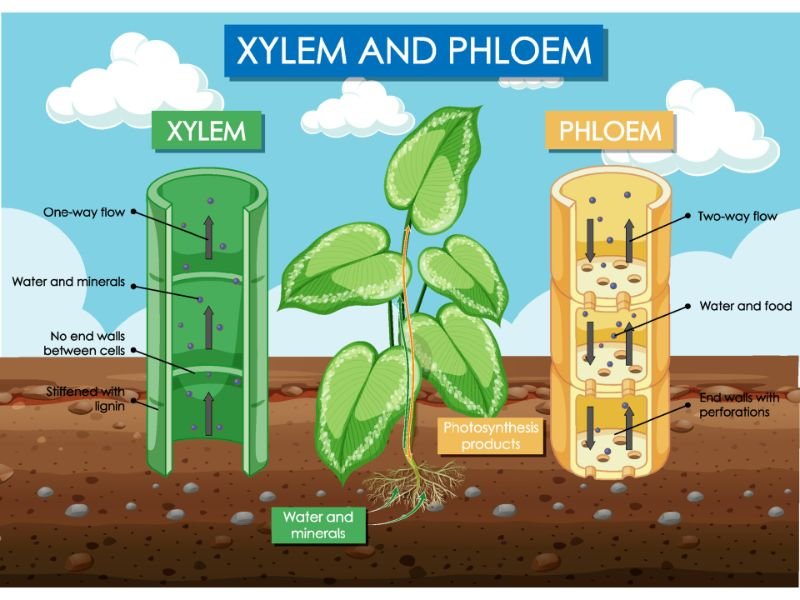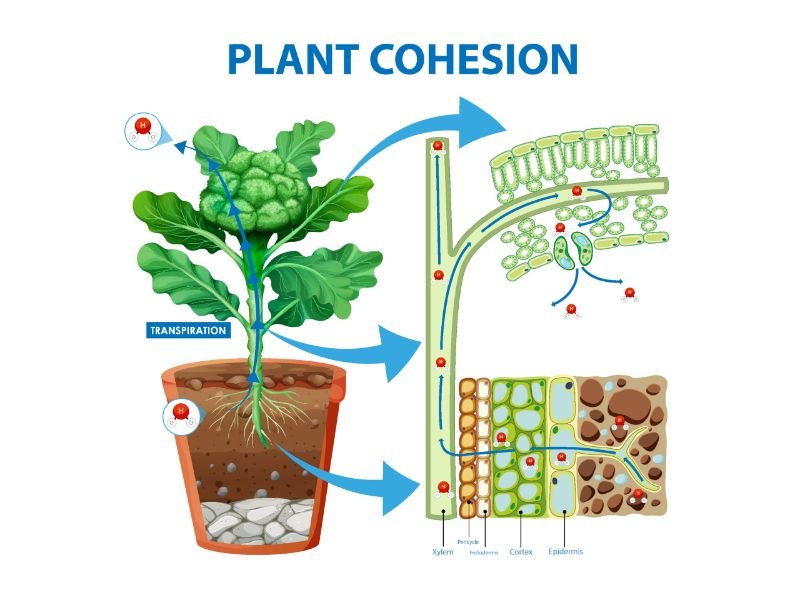Water is one of the most vital abiotic factors that help the plant’s growth. But how is water being absorbed from the deepest jungle floor to the highest canopies? In this section, we will describe how do roots absorb water from the soil along with influencing factors, and tips about when to give your lovely plant important living needs. Let’s take a look!
Table of Contents
How do the roots of plants absorb water?

What part of the plant absorbs water first? Yep, it’s the root hairs, or absorbent hairs, located at the tip of each plant’s roots. When you water your plant, the water will gradually be absorbed by the roots hair that resides deep down in the soil, up until the plant’s highest stems and foliage. As the plant needs to work against gravity, the process of absorbing water from the soil to all parts of the plant is magical.
Think about how our hearts pump out blood to all our cardiovascular systems. In terms of how do roots absorb water from the soil, plants have their own ‘cardiovascular system’ called xylem and phloem tissues that extend all over the plant’s body, which helps distribute water and all the crucial minerals.
Xylem helps distribute water and any other crucial nutrients from roots to foliage, while phloem does the contrary. The process of distributing all the essential minerals, photosynthesized nutrients, and water by xylem and phloem tissues is known as the transportation process.

The process of how do roots absorb water from the soil can be described using three different approaches. First, the vital force theory. According to this theory, water can be absorbed from the soil and then distributed all over the plant’s part as the result of living cells in the xylem tissue, for example, the parenchyma cells. Parenchyma cells have such important roles to help the plant to regenerate, photosynthesize, store, and distribute energy.
Next is the cohesion-tension theory, which states that the water absorption process from soil to foliage is due to the ‘pulling force’ of the transpiration process. In short, transpiration is a natural process where the ‘upward force’ is produced inside the xylem tissues, making the water directly absorbed from the root hairs up to the xylem vessels.
The last approach to explain how do roots absorb water from the soil is the root pressure theory, which states that water and minerals can be absorbed and rise upwards due to root pressure. Root pressure occurs due to the difference in water concentration inside the soil with the liquid in the xylem’s canal. When the underground water concentration is at a high level, it could result in a process called osmosis.
Osmosis is an element of the xylem that helps accumulate sugar and salt. As the root tissue absorbs more minerals and water, the water volume inside the roots increases. This results in high pressure that forces the water and minerals from the xylem to all over the leaves and stems.
How roots absorb water: What factors are affecting the process?

Knowing just how do roots absorb water from the soil is not enough. Although we’ve tried our best to give the plants enough water, sometimes things don’t go as planned. On many occasions, there are even gardeners who mourn the death of their loved plants, even though the plant has been given adequate water. To investigate this problem, we will dive into the further topic–what things you should check regularly when watering and monitoring the water absorption in plants.
The main points that affect water absorption in plants can be divided into two, that is external and internal factors. We start with the external factors.
The soil water availability
As a general rule of thumb, water should be available in the soil and in the area where the absorption process is possible. However, too much water in the soil would do more harm than good as it results in poor aeration that can lead to pest growth.
Concentrations in soil solution
The increasing concentrations in soil solution, e.g. due to more salt in the soil, could lead to poor water absorption. Whilst some plants have evolved to thrive in alkaline and saline soils, monitoring how much is too much will do wonders.
Air
A poorly aerated soil could reduce the plant’s ability to absorb water due to oxygen deficiency. Poor aeration also suppresses the plant’s growth.
Temperature
When it comes to monitoring temperature, both too-high and too-low temperatures favor the water absorption process. At a high temperature, >30 celsius, water absorption decreases as water will evaporate quickly into the air. Meanwhile, in lower temperatures, the water absorption not only decreases but will also almost completely stop when it reaches 0 celsius. This is because at low temperatures, there’s little to no metabolic activity, and the plants will go into dormancy to preserve energy.
Now let’s move to the internal factors that affect how do roots absorb water from the soil.
Transpiration
Transpiration is a process when the water vapors through the foliage’s stomata, similar to evaporation. Higher transpiration rates mean higher tension that is transmitted to roots, producing favorable conditions for water to enter the plant.
Root systems
This is all about the root hair, the higher the amount of root hair is, the better for plants to absorb water directly from the soil.
Metabolism
The metabolism and water absorption processes are closely related. Factors including bad aeration and the presence and absence of cyanide (KCN) inhibit the absorption rate.
How do you know how much you should water your plant?
For most plants, the process of how do roots absorb water from the soil could be a complex task, so overwatering should be avoided as it can lead to a plant’s stress. An easy way you could do it right now is by using your fingertip. Dip your fingertip to the first one or two inches (2.5 to 5 centimeters) of the topsoil. Water should only be given when the topsoil feels dry. An inch of water about once a week or once every two weeks is all your plant needs to thrive. But also remember that season plays a role too, just decrease the regular water intake to about 2 times per month.
Wind Up – So how do roots absorb nutrients?
Roots absorb water from the soil directly from the presence of root hairs. Numerous factors like air, temperature, metabolism, and transpiration process generally affect the roots’ water absorptions. We hope this article about how do roots absorb water from the soil gives you some sort of insight, and remember to not ever over-watering your plant. Happy Gardening!

New author in the hood. Loves gardening and flowers are my spirit animals (yes I know they are not animals but I insist). I will be covering most of the flowers’ topics here and occasionally random though as well.






